Day 4, Chobe National Park safari drive. Elephants.
In the two and a half hours that we were in Chobe National Park on Tuesday afternoon, I took over 200 photos. I'll choose my favorites and share photos of different animals in each of the next several blogs.
Chobe National Park is quite crowded, both with tourists and animals. The myriad, criss-crossing jeep trails are dusty and rough. Just like in our Rocky Mountain National Park, when one carload of people spots an animal, it stops and watches, and then other carloads come up on the scene, and they stop too. The guides are in radio contact with each other, and sometimes we'd rush off in a new direction to follow a lead to an animal or situation we had not yet seen. We were either holding onto the seat-rail for dear life or focusing our cameras or binoculars on the wildlife. Not just a quiet walk in the woods, this type of safari-ing. Our guides not only alert us to birds and animals, they keep up a running commentary on animal behavior.
We are told that the animals view the jeep and the people in it as one large unit, and because of this they will not attack us because we appear very large and do not look or smell like prey. We do not leave the vehicle except in specific locations, and then we do not stray far from it, but stay under the watchful eyes of our guides.
I never got tired of watching elephants. Luckily, our tourmates felt the same. The way the elephants lumber gracefully along, the different gestures that they made that told us how they felt, the interactions of the mothers and babies . . . so fascinating to see in person.
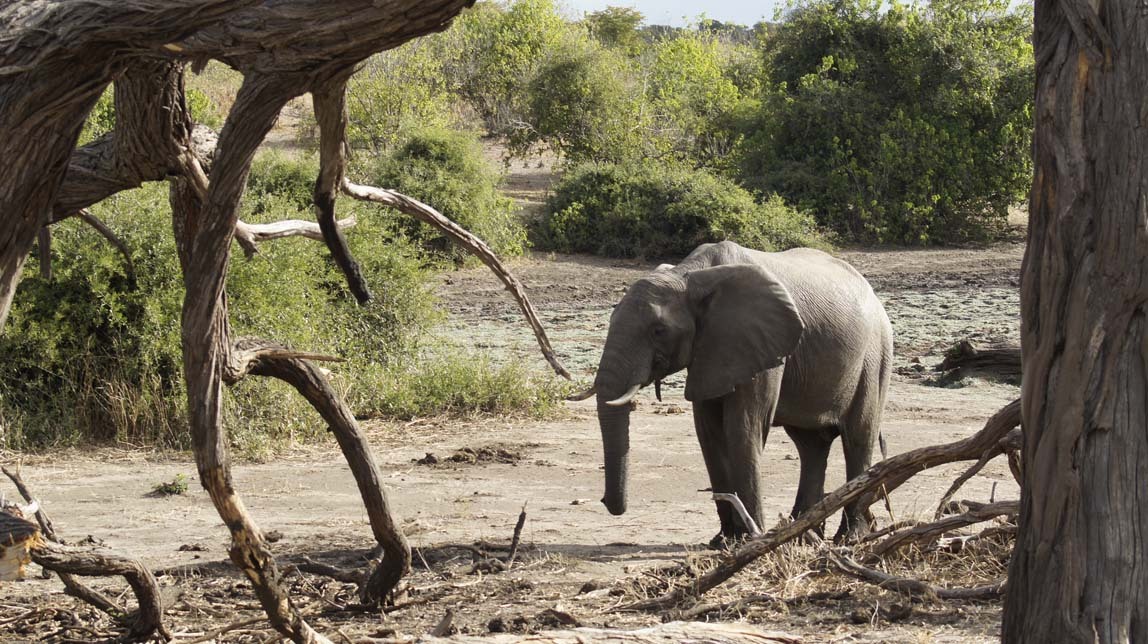
Many of the elephants had broken tusks. This is due to wear and tear while foraging or perhaps from sparring with other elephants.
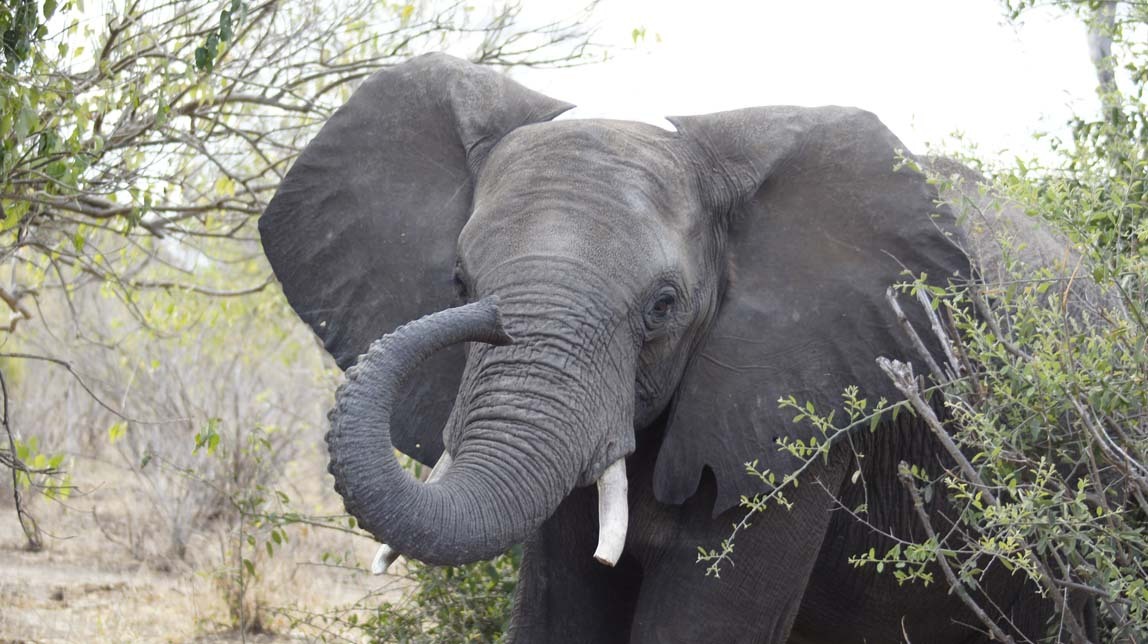
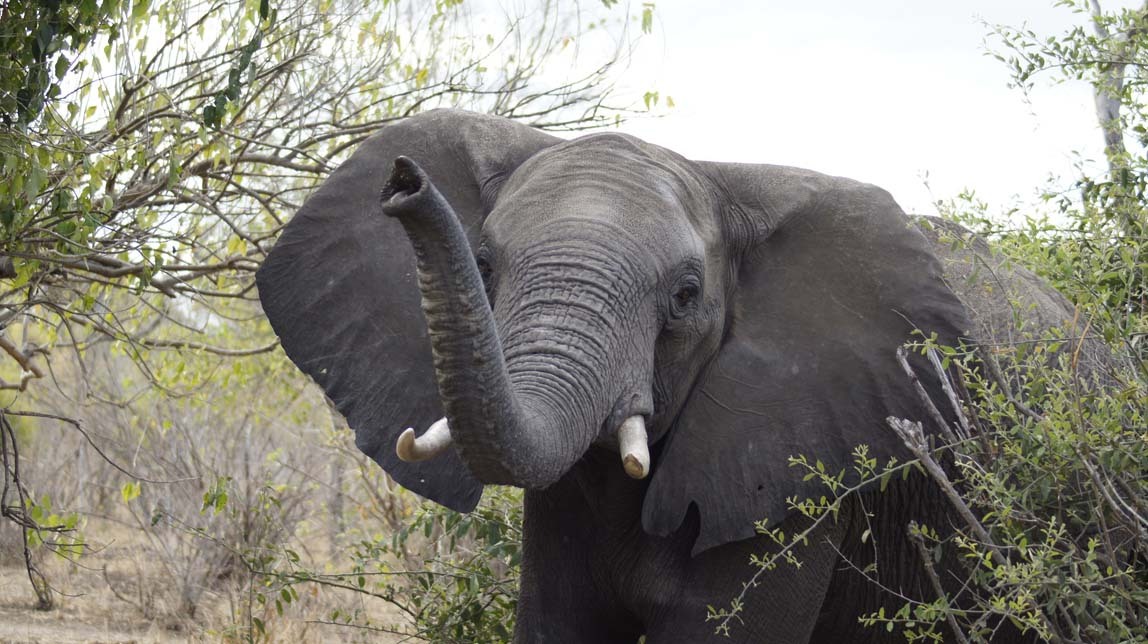
Here is a young elephant walking by:
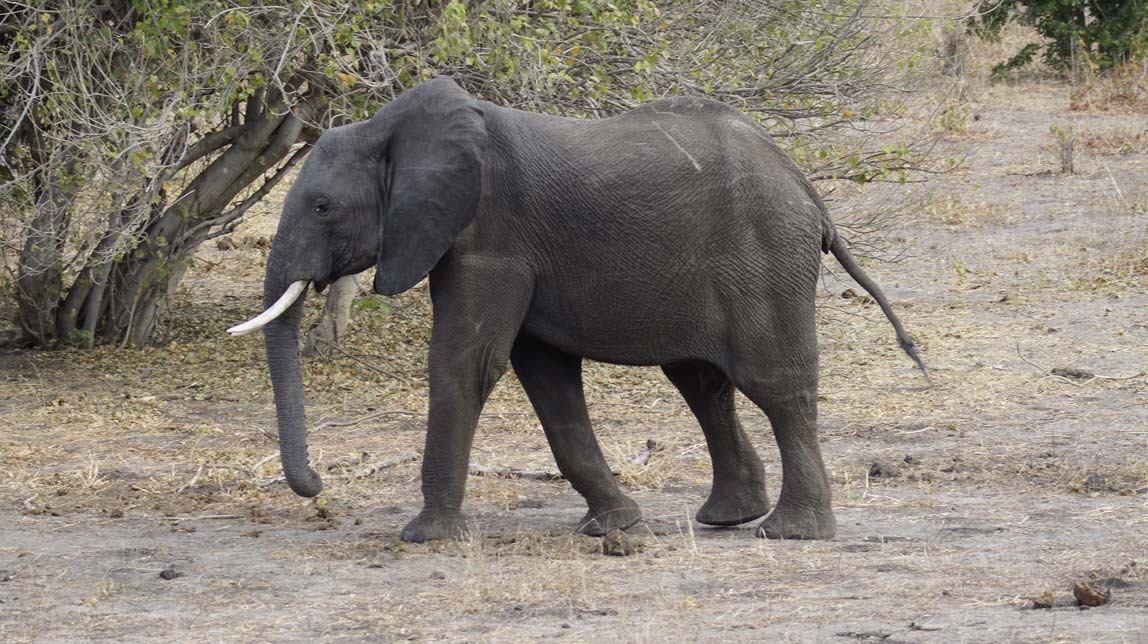
and then he got jaunty:
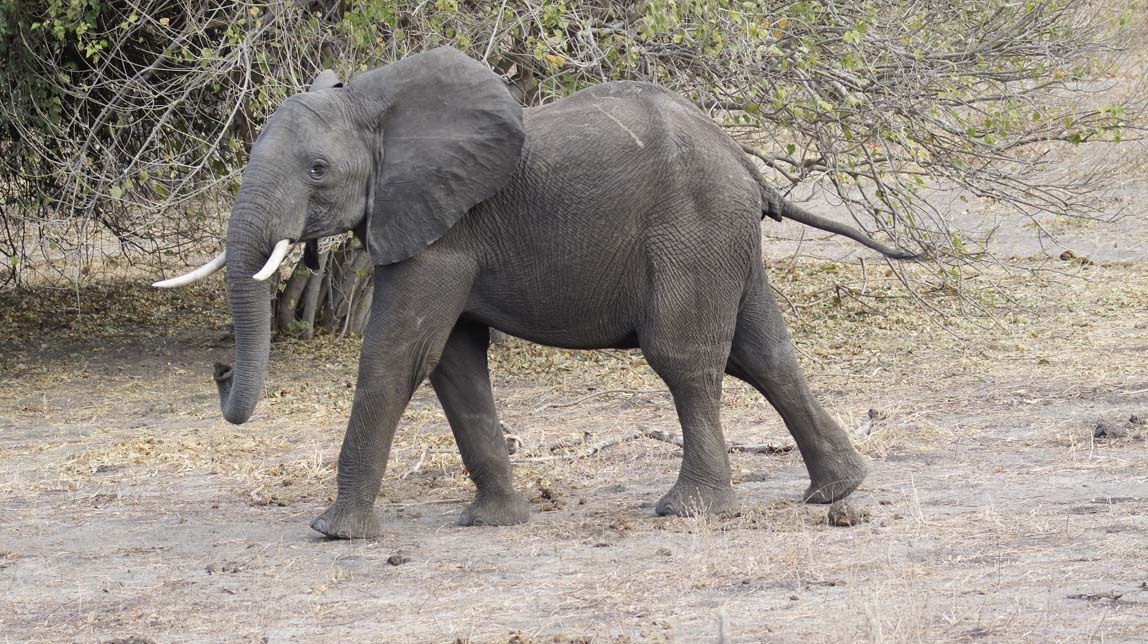
Here is a baby elephant:
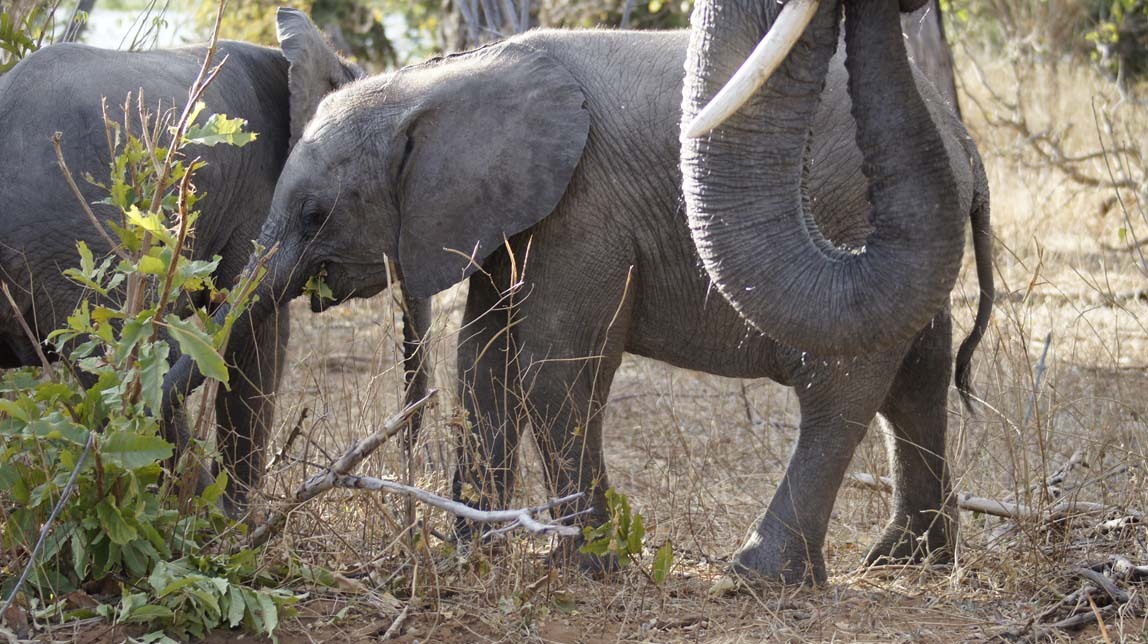
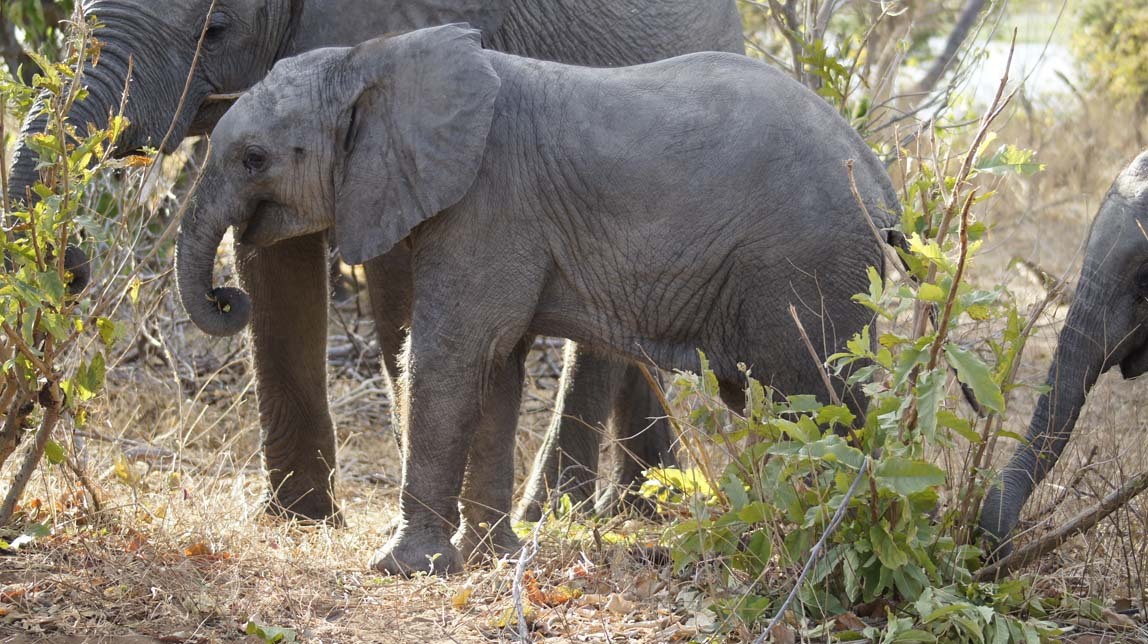
An elephant ripping a limb off a bush:
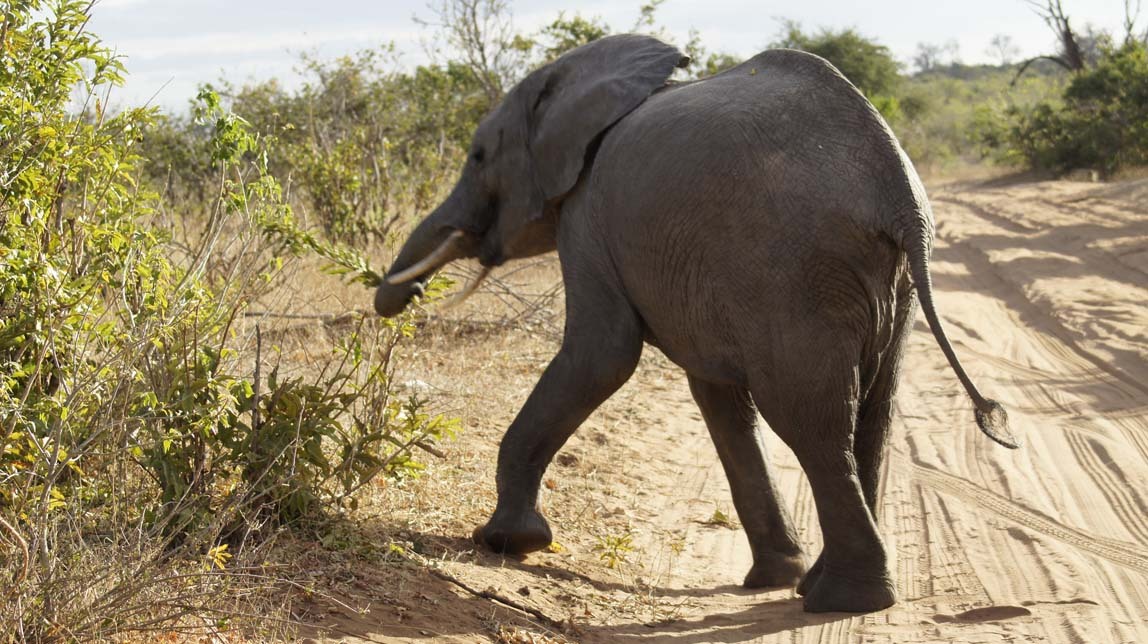
This group of elephants is walking up after getting a drink in the Chobe River. Elephants drink by drawing the water up into their trunk, and then shooting it into their mouth. Note how close these elephants are to the jeep - those are John's binoculars that you see in the photo.
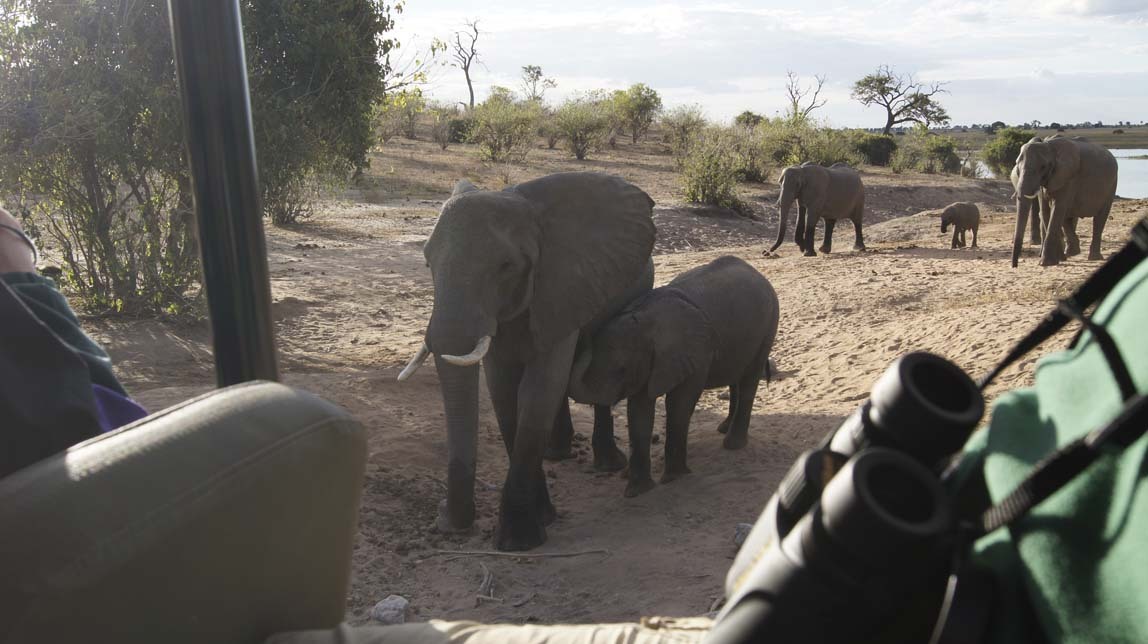
Note that the mom's ears are slightly flared, and see how the baby's trunk clings to her side. If you look closely, you will see the elephant's breast between her front legs. And see how wet their legs are from being in the water.
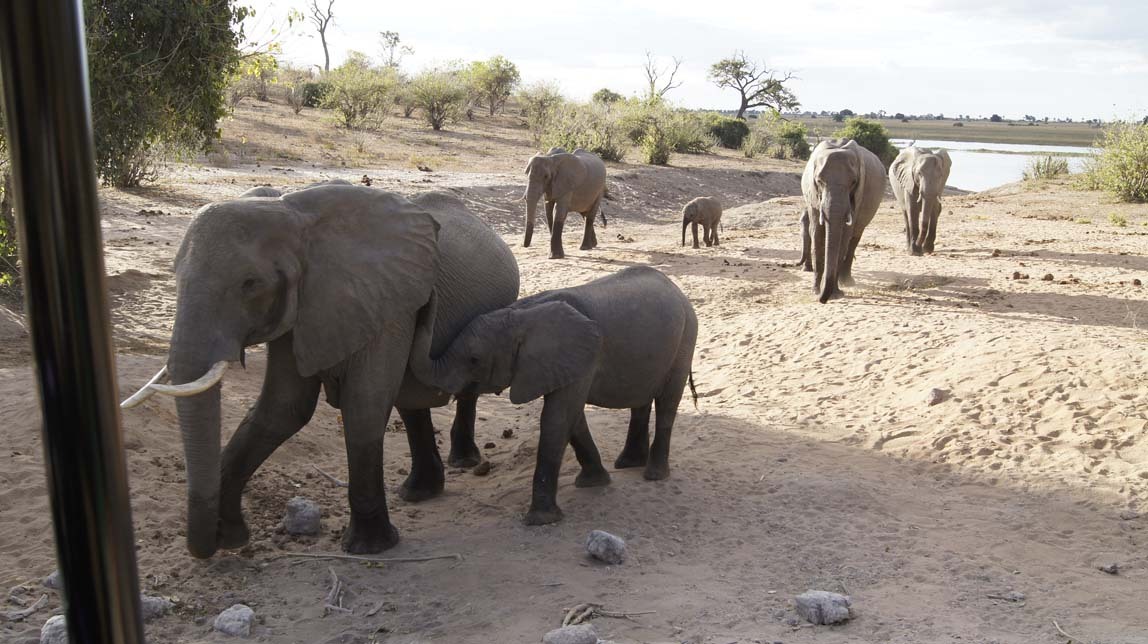
The mom looked in at us as she passed, her ears definitely tell us her mood:
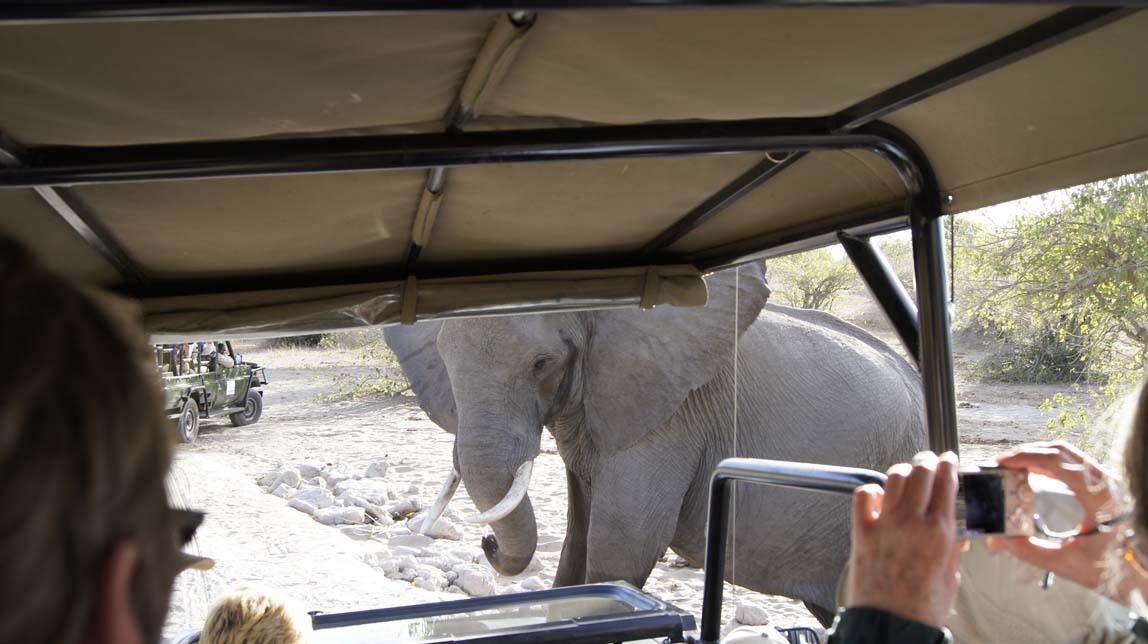
After giving us her opinion about our presence, the mom walks away, her baby following, touching her tail and flank with its trunk.
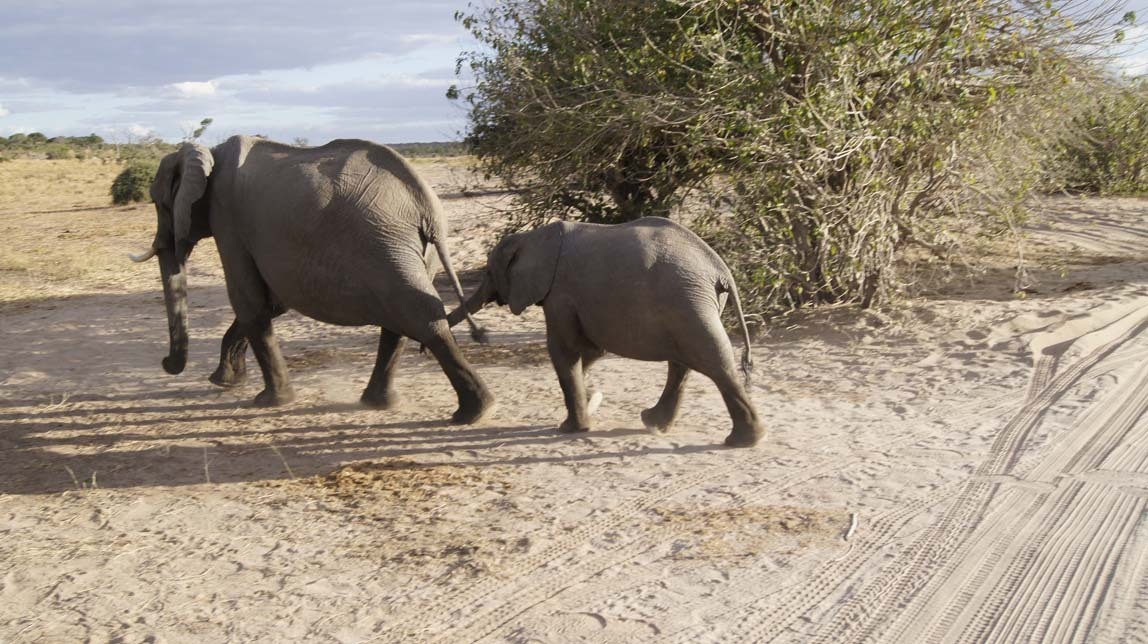
The herd passes us and leaves, tails swishing.
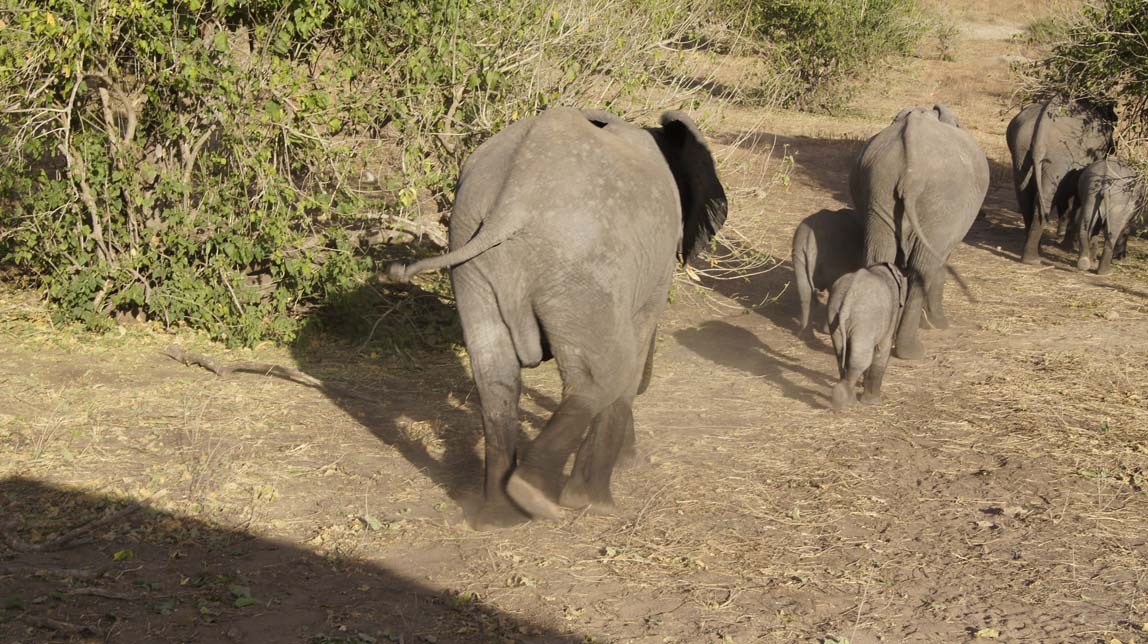
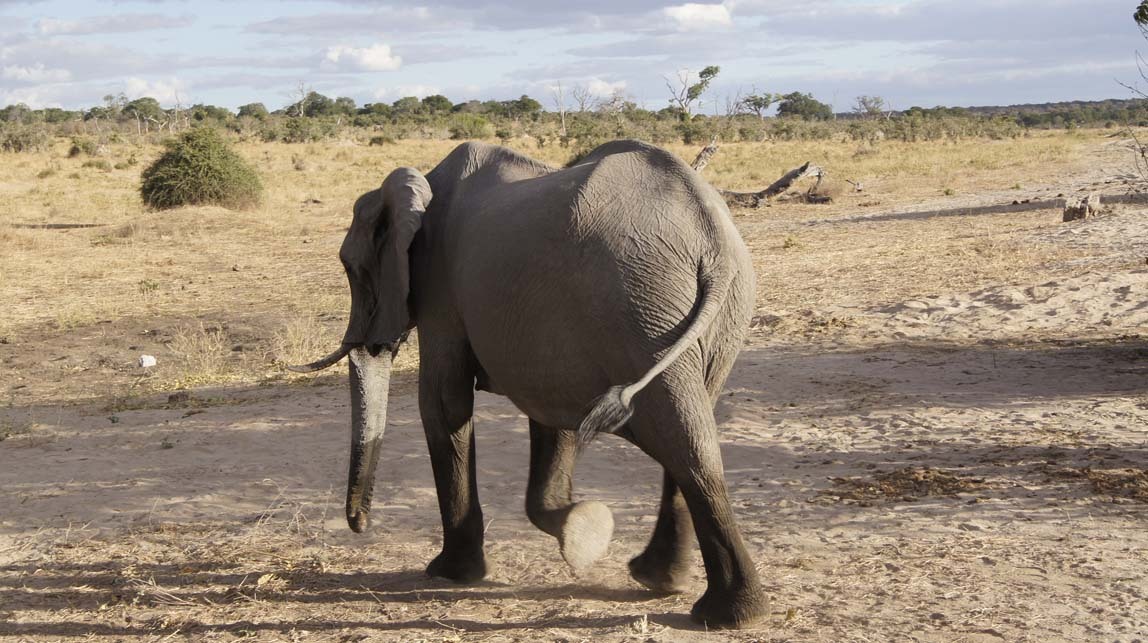
A herd of mothers and babies:
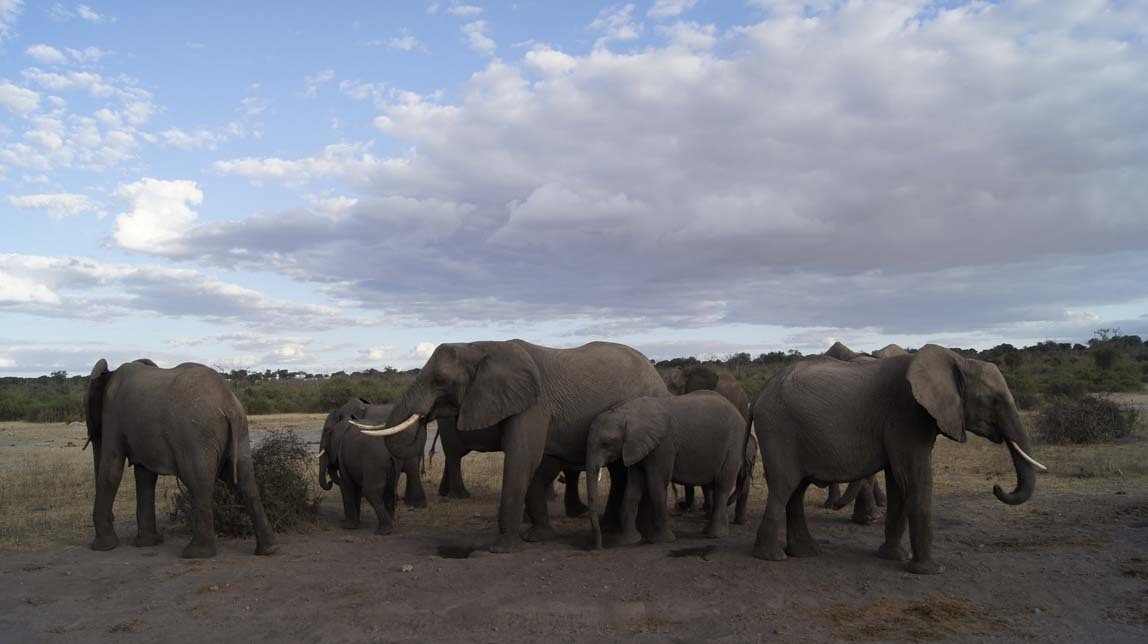
The elephant in the front is the matriarch, warning us with her flared ears:
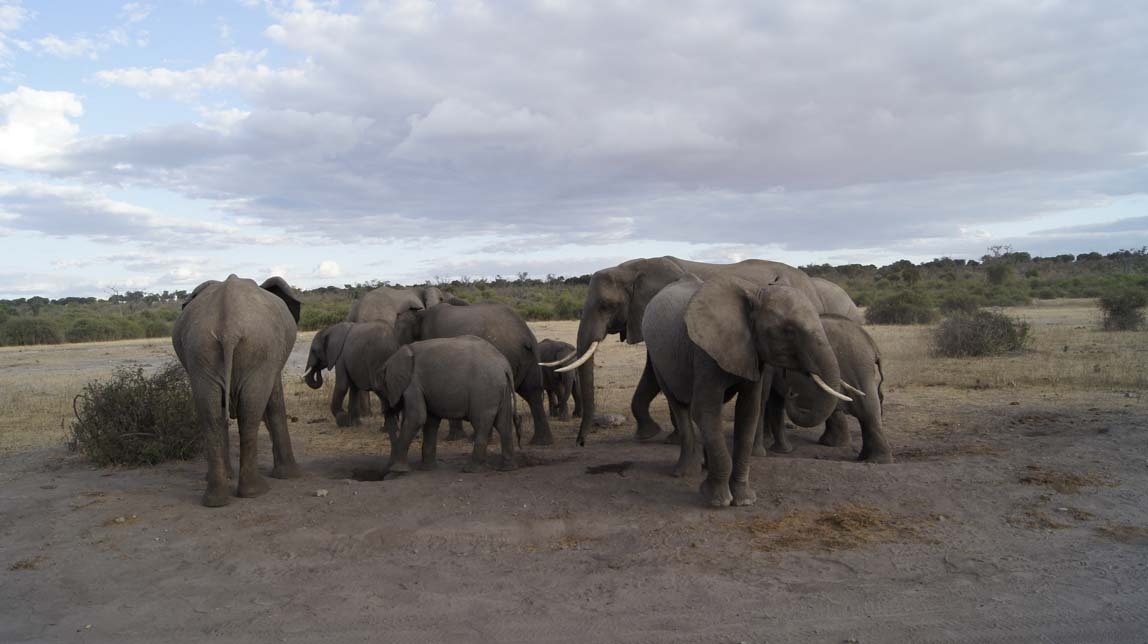
In the photo below, note not only the elephant, but the damage to the area that elephants have caused. Parts of Chobe National Park are full of dead, skeletal trees. Some people believe that the reserves are too successful because there are too many elephants and they destroy the habitat. They believe that it is unstainable, and that some elephants need to be culled, much as the elk are managed in US national parks. But public outcry ensues when this is mentioned. Others are of the opinion that the forests overgrew in the late 1800s because of animal disease epidemics, and that the elephants are helping the area return to a savanna state by reducing the number of trees.
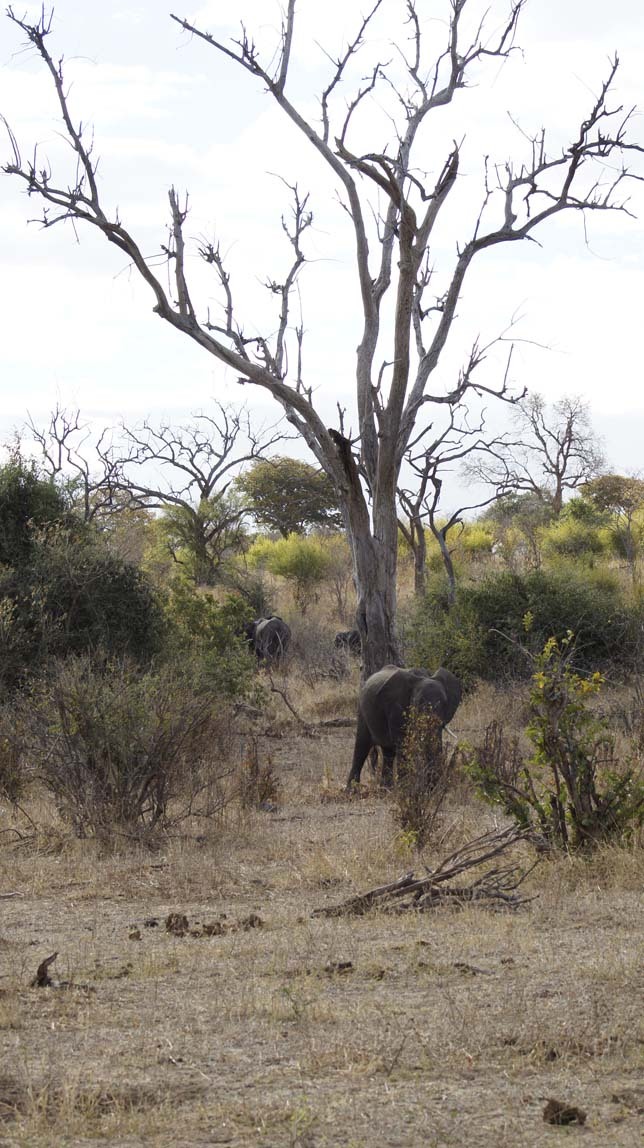
Navigation: first safari blog entry
Next blog entry
Chobe National Park is quite crowded, both with tourists and animals. The myriad, criss-crossing jeep trails are dusty and rough. Just like in our Rocky Mountain National Park, when one carload of people spots an animal, it stops and watches, and then other carloads come up on the scene, and they stop too. The guides are in radio contact with each other, and sometimes we'd rush off in a new direction to follow a lead to an animal or situation we had not yet seen. We were either holding onto the seat-rail for dear life or focusing our cameras or binoculars on the wildlife. Not just a quiet walk in the woods, this type of safari-ing. Our guides not only alert us to birds and animals, they keep up a running commentary on animal behavior.
We are told that the animals view the jeep and the people in it as one large unit, and because of this they will not attack us because we appear very large and do not look or smell like prey. We do not leave the vehicle except in specific locations, and then we do not stray far from it, but stay under the watchful eyes of our guides.
I never got tired of watching elephants. Luckily, our tourmates felt the same. The way the elephants lumber gracefully along, the different gestures that they made that told us how they felt, the interactions of the mothers and babies . . . so fascinating to see in person.

Many of the elephants had broken tusks. This is due to wear and tear while foraging or perhaps from sparring with other elephants.


Here is a young elephant walking by:

and then he got jaunty:

Here is a baby elephant:


An elephant ripping a limb off a bush:

This group of elephants is walking up after getting a drink in the Chobe River. Elephants drink by drawing the water up into their trunk, and then shooting it into their mouth. Note how close these elephants are to the jeep - those are John's binoculars that you see in the photo.

Note that the mom's ears are slightly flared, and see how the baby's trunk clings to her side. If you look closely, you will see the elephant's breast between her front legs. And see how wet their legs are from being in the water.

The mom looked in at us as she passed, her ears definitely tell us her mood:

After giving us her opinion about our presence, the mom walks away, her baby following, touching her tail and flank with its trunk.

The herd passes us and leaves, tails swishing.


A herd of mothers and babies:

The elephant in the front is the matriarch, warning us with her flared ears:

In the photo below, note not only the elephant, but the damage to the area that elephants have caused. Parts of Chobe National Park are full of dead, skeletal trees. Some people believe that the reserves are too successful because there are too many elephants and they destroy the habitat. They believe that it is unstainable, and that some elephants need to be culled, much as the elk are managed in US national parks. But public outcry ensues when this is mentioned. Others are of the opinion that the forests overgrew in the late 1800s because of animal disease epidemics, and that the elephants are helping the area return to a savanna state by reducing the number of trees.

Navigation: first safari blog entry
Next blog entry
Comments
No comments yet
Add Comment